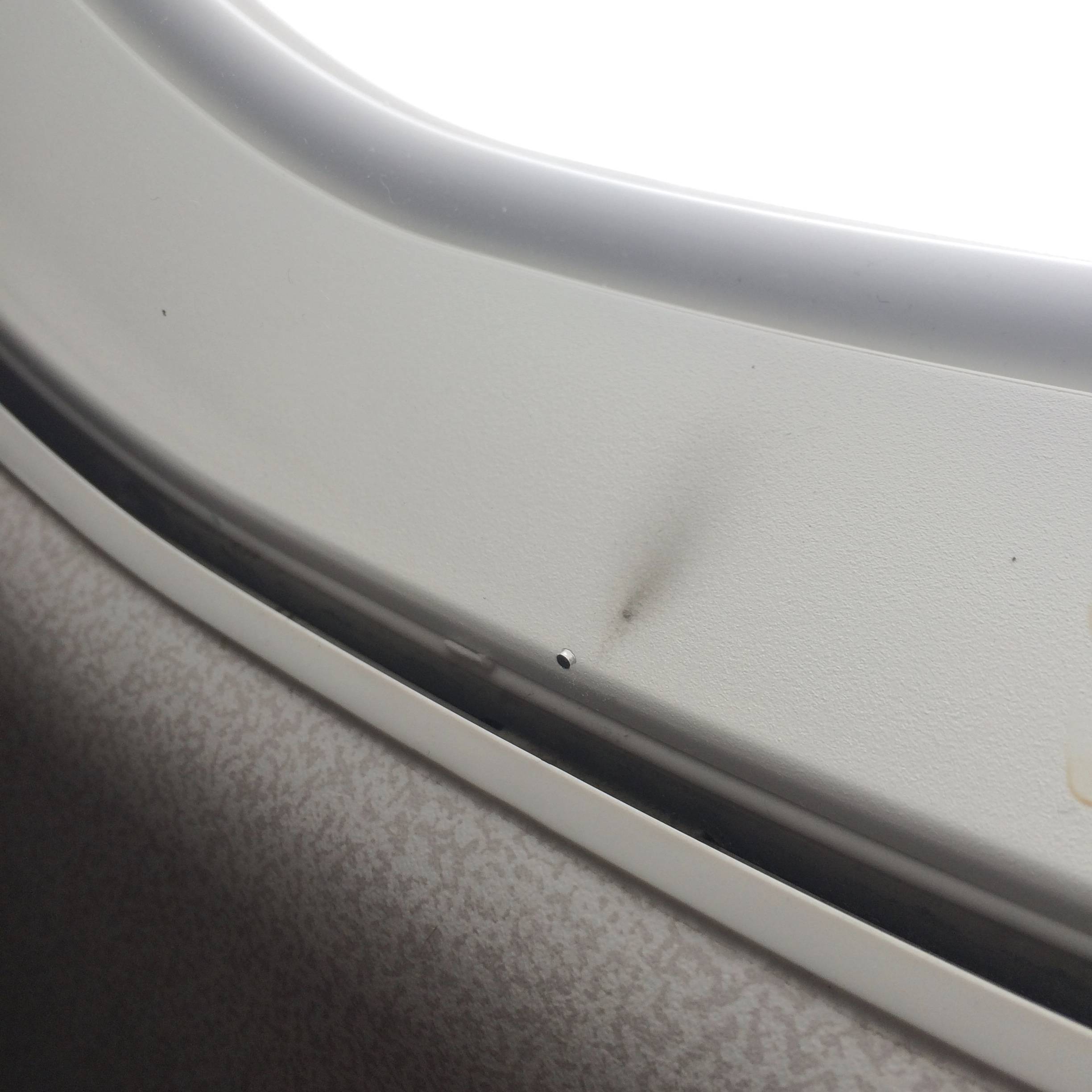On a recent flight, I noticed a pattern of staining or dust particles inside the window, on the plastic reveal within the cavity.
It looked as though a long-term and consistent pressure differential between the cabin and the cavity had drawn a stream of air into the cavity, resulting in what looked like a sooty stain.
And even more oddly, as you can see in the picture, right opposite the vent, the mark is very concentrated, as though formed by a high-pressure stream - which I presume isn't actually the case.

